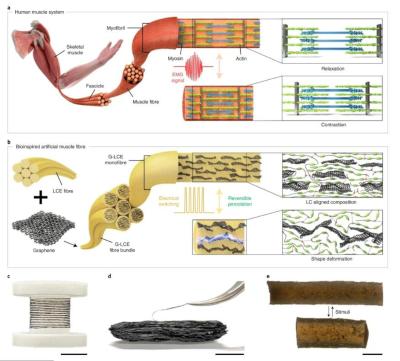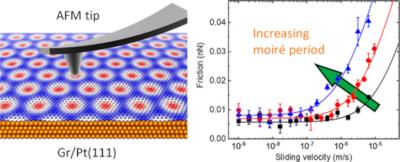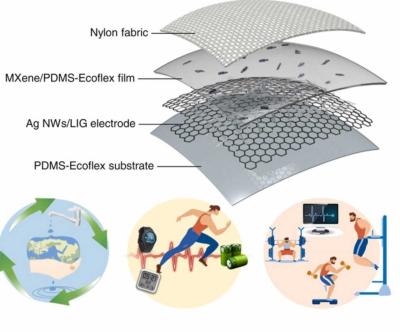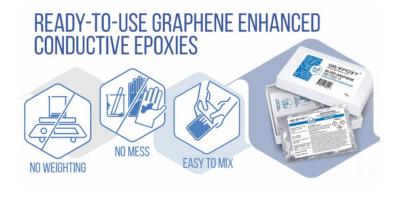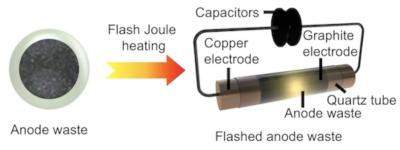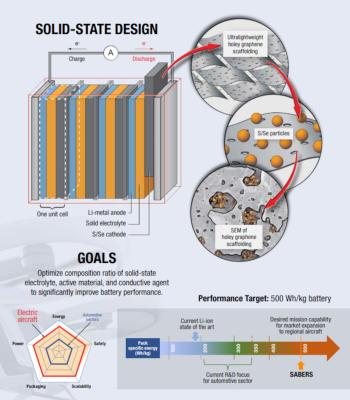The Graphene-Info weekly newsletter
Published: Tue, 12/13/22
The Graphene-Info newsletter (December 16, 2022)
Cannot read this? View it online here
Versarien announces placing to raise over USD$2.2 million
Versarien has announced that it has raised £1.85 million (around USD$2,259,000) in new share capital.
Yesterday, Versarien provided an update on its £5 million graphene project G-SCALE (Graphene, Seat, Concrete, Arch, Leisure, Elastomer). The project aims to produce sufficient quantities of graphene to enable commercialization of graphene-enhanced products in these five priority application areas.
G6 Materials enters collaboration agreement with MADE Advanced Materials
G6 Materials has announced that its wholly owned subsidiary, Graphene Laboratories (GLI), has entered into a Strategic Partnership Agreement with Singapore-based MADE Advance Materials. The collaboration between GLI and MADE will be focused on production collaboration and the potential joint development of intellectual property.
MADE is a company that aims to introduce a new way of development in the next generation of graphene/fiber-reinforced composite materials. MADE works within the automotive, marine, and lifestyle industries.
PlanarTECH on its way to its best year ever, gets ready for its second crowdfunding round
UK-based PlanarTECH offers R&D and production-scale equipment and services for all classes of emerging 2D materials and carbon-based materials such as CNTs and CVD diamonds. In 2020 planarTECH launched a successful equity crowdfunding campaign as it aims to expand its business and enter new markets such as industrial CVD graphene production systems and material production.
We have recently talked to the company's CEO, J. Patrick Frantz, who gives us the latest business and technology updates from PlanarTECH.
Q: Can you update us on your latest business activities, with a focus on graphene?
We had a very difficult time during the pandemic, as many companies did. From July 2020 through June 2021 we shipped just one CVD system. However, we started to see a resumption of customer activity towards the end of 2021 as labs reopened and people around the world got back to work. For 2022, we’re seeing a complete recovery and are on our way to the best year we’ve ever had in terms of sales.
Researchers develop graphene-enhanced artificial muscle with exceptional strength
Researchers from the Korea Advanced Institute of Science and Technology (KAIST), Pusan National University and CNRS have developed an artificial muscle that is 17 times more powerful than that of humans. The muscle made of graphene-liquid crystal elastomer-based fiber bundles will reportedly be commercialized through a Korean company.
The main factor that hinders the development of high-performance artificial muscles is that scientists are not able to mechanically select a certain part of the artificial muscle to contract and expand. Large and bulky artificial muscles are not accurate enough.
Researchers report surprising speed-dependent friction in graphene
Researchers from the University of Basel and Tel Aviv University have reported insights relating to friction in graphene. If graphene is applied to a platinum surface, it has a significant impact on the measurable friction forces. The team found that in this instance, the friction depends on the speed at which the tip of an atomic force microscope is moved across the surface.
This finding is surprising because friction does not depend on speed according to Coulomb's law, which applies in the macro world.
Researchers examine the role of temperature on defect diffusion in graphene
Researchers from Oak Ridge National Laboratory and Princeton University recently set out to automate the beam of an electron microscope in order to drill holes in graphene, but found that the drilled holes closed up. They expected the heat to make atoms easier to remove, but they saw the opposite effect.
"Graphene appeared impervious to the electron beam," said Ondrej Dyck, who co-led the study with Stephen Jesse at ORNL's Center for Nanophase Materials Sciences. Jesse added, "It heals locally, like the (fictitious) liquid-metal T-1000 in the movie Terminator 2: Judgment Day."
New study commissioned by EUON assesses graphene’s potential impact on health and environment
The European Union Observatory for Nanomaterials (EUON) has published a study that has systematically reviewed and critically assessed the potential health and environmental effects of graphene, graphene oxide, and other two-dimensional (2D) materials, based on existing public information of the last ten years.
It was explained that graphene’s rising popularity and broad application potential raise the need for more efforts in researching its safety aspects. The current study identified potential risks in specific scenarios, for example for surface water and soil located near point sources (such as production sites).
Researchers combine graphene foam and MXenes to create creates high-performance, stretchy nanogenerators
Researchers from China's Hebei University of Technology and The Pennsylvania State University in the U.S have combined MXenes and laser-induced graphene foam nanocomposite to improve the design and performance of triboelectric nanogenerators (TENGs) - power sources that can be used for various flexible electronic devices and wearables.
The popularity of wearable electronics has induced demand for their parts, including power sources such as TENGs. Such power sources must be both stretchy and high-performance, holding up under various deformation conditions over hours of use. The researchers created a material system that enables a TENG to be stretchy and able to perform on dynamic surfaces, such as the human skin or the leaf of a plant.
G6 Materials launches a range of graphene-enhanced electrically-conductive adhesives
G6 Materials is launching new ready-to-use graphene-enhanced electrically-conductive adhesives. The G6 Epoxy materials are made from from graphene and silver, and these adhesives are ready-to-use, excellent for quick and easy applications.
G6 Materials has opened an Amazon shop, where you can find a broad range of innovative electrically conductive adhesives based on the company's proprietary fillers. The mixing procedure does not require any additional materials, keeping your workspace clean and tidy.
Researchers develop rGO-based material for improved Li-S batteries
Researchers at South China Normal University, Soochow University, Nanjing Tech University and Macau University of Science and Technology have reported a new difunctional Li-S battery separator (CC-rGO/AB/PP) derived from a novel synthesis method under extreme pressure to promote more efficient Li-S batteries in a simple way.
Lithium-sulfur (Li-S) batteries theoretically have energy capacity far beyond lithium-ion batteries and have thus attracted much attention. However, the actual lifespan and conversion efficiency are significantly reduced by the shuttle effect in which lithium polysulfides (LiPSs) dissolve and penetrate to the anode during discharge and cause internal short-circuit. Although there are techniques to suppress the shuttle effect by the separator, most of them still have to sacrifice other performance indicators, such as the ability of lithium-ion transportation.
Rice team modifies Flash Process to recycle lithium-ion anodes
Researchers from the Rice University lab of chemist James Tour have reconfigured their "Flash Graphene" process to regenerate graphite anode materials found in lithium-ion batteries, removing impurities so they can be used again and again.
Flashing powdered anodes from commercial batteries recycles some of what the researchers called the “staggering” accumulation of waste they currently leave behind. In just a few seconds, a jolt of high energy decomposes inorganic salts including lithium, cobalt, nickel and manganese from an anode. These can be recovered by processing them with dilute hydrochloric acid.
NASA's project SABERS is testing a graphene battery that could be a game changer for aviation and EVs
NASA's SABERS (Solid-state Architecture Batteries for Enhanced Rechargeability and Safety) project, which has been going on for a few years under NASA’s “high risk, high reward” research program, aims to develop batteries with improved power density (preferably ones that could make electric flight feasible, which required around 480 watt-hour per kilogram).
Work taking place at NASA Glenn Research Center in Cleveland, Ohio, by an engineering team lead by Dr. Rocco Viggiano, is aiming to produce batteries that are powerful, light, fast to charge, scalable to any application, and extremely safe. The scientists are doing so by getting rid of the toxic and dangerous materials that make current batteries too inefficient and risky to put in a plane, for example.
GMG announces an investment of over $400,000 to boost battery pouch cell customer testing and development
Graphene Manufacturing Group (GMG) has provided an update on the ongoing investment in its Battery Development Centre (BDC), saying its board of directors has approved an additional A$600,000 (around USD$405,000) in capital expenditure to accelerate the progress of semi-automatic pouch cell prototype production for customer trials and Graphene Aluminium Ion (G+AI) Battery cell development.
GMG noted that it has also successfully increased its organizational capacity by attracting new staff experienced in pouch cell manufacturing, thereby enabling the acceleration of its battery performance optimization program.
Metalgrass LTD
9 Har Tsin St.
Kfar Sava Hasharon 4430809
ISRAEL
Unsubscribe | Change Subscriber Options



